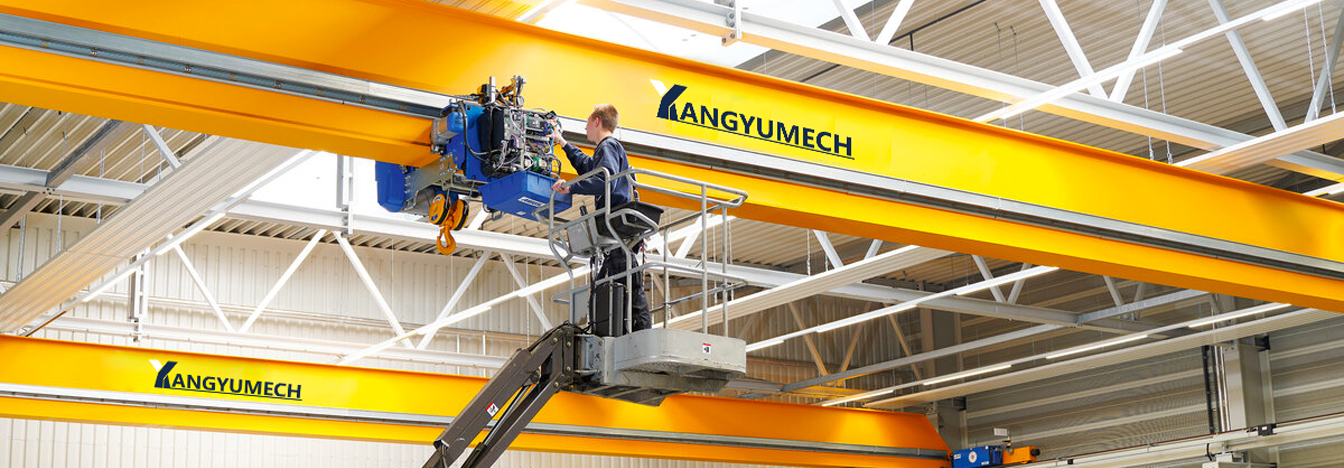To ensure the safe operation of cranes, extend their service life, and enhance economic efficiency, proper maintenance of lifting equipment is essential during use. Maintenance refers to a series of tasks performed to keep or restore cranes to a state where they can perform their specified functions. Maintenance is categorized into scheduled maintenance (regular maintenance) and unscheduled maintenance (troubleshooting, repairs, shutdown repairs). Maintenance personnel must perform all necessary maintenance in accordance with the manufacturer’s operating manual and safety protocols to ensure the crane’s upkeep, safety, and normal operation.

Maintenance procedures should be established based on the manufacturer’s operating manual. In the absence of such documentation, procedures must be developed by a qualified individual.
The manufacturer’s instruction manual specifies recommended maintenance intervals, which must not be exceeded. The manual also identifies lubrication points attention, the time intervals or frequency for grease and oil changes, and the quality and grade of lubricants to be used.
Based on the results of daily inspections, routine inspections (weekly/monthly), periodic inspections (quarterly/annual), comprehensive inspections, special inspections, and other inspections (condition monitoring requirements, component retirement, accidents, repairs, post-earthquake), determine items requiring adjustment, repair, or necessary component replacement. Inspection methods include visual inspection, non-destructive testing, functional testing, no-load testing, load testing, static load testing, dynamic load testing, and stability testing.
Maintenance work is strictly prohibited outdoors during severe weather conditions such as high winds, thunderstorms, ice/snow storms, extreme cold, or dense fog. The following precautions must be taken before performing maintenance on cranes:
a) Move the crane to an area causing minimal interference with other cranes and operations.
b) If the crane is carrying a load, unload it.
c) All control devices must be in the off position.
d) Use tag/lockout procedures. Display a “Under Maintenance” sign, or lock the switches on controllers or control panels in the ‘OFF’ or “DISENGAGED” position. Only maintenance personnel may perform tagging or locking.
e) If the maintenance work poses a hazard, warning signs and barriers should be used on the ground beneath the crane.
f) For cranes undergoing maintenance, power should be disconnected or measures taken to prevent electric shock.
g) Before disassembling hydraulic components, pressure must be relieved.
h) Maintenance personnel shall wear appropriate personal protective equipment (PPE) such as safety shoes, hard hats, safety harnesses, or safety glasses. Adequate fall protection shall be provided where there is a risk of falling from heights during maintenance.
i) Maintenance areas shall be adequately illuminated.
g) Safe and reliable tools shall be used.
k) Appropriate protective measures shall be taken during welding operations.
l) Necessary fire prevention measures shall be implemented during maintenance.
After completing maintenance work and before resuming normal crane operation:
a) Reinstall protective devices;
b) Restore the functionality of safety devices and recalibrate them if necessary;
c) Remove replaced parts and scattered objects;
d) Clear away maintenance tools and equipment.
Perform the following repairs or replacements as required by routine inspections in the maintenance procedures, when operational needs dictate:
a) Components of crane mechanisms that are cracked, broken, corroded, bent, or excessively worn; Click to view scrap standards for critical crane components
b) Structural members of the crane that are cracked, bent, broken, or excessively worn;
c) Damaged or worn hooks; forged hooks shall not be repaired by welding or reshaping;
d) Electrical contacts that are dented or burnt shall be replaced;
e) Control device components shall be lubricated according to the methods recommended in the crane manual;
f) Functional, instructional, cautionary, and warning labels affixed to suspended control stations shall remain clearly legible.
g) Replacement parts shall meet at least the same technical specifications as those used by the original manufacturer.
h) If welding is used to repair load-bearing components, the repaired area shall undergo material identification and adhere to proper welding procedures.
All moving parts requiring lubrication on the crane shall be lubricated at regular intervals. The delivery of lubricant within the lubrication system shall be checked for unobstructed flow. The manufacturer’s recommendations shall be followed regarding lubrication points and intervals, maintenance of lubricant fluid levels, and the type of lubricant used. Unless equipped with automatic or remote lubrication devices, the machine shall be stationary and protective measures provided when applying lubricant.
A meeting was held by our team on Monday with the client team for the Zephyr project to review the status of the forthcoming Q3 launch campaign. The campaign, originally built as an omnichannel activation across CTV, paid social, and programmatic display, is now subject to substantial midstream revisions—following newly surfaced client directives. The feedback introduces a material shift in strategic framing under a compressed delivery window.
There will be a pivot as Zephyr deprioritizes the performance-tracking narrative in favor of a broader “everyday wellness and inclusivity” story, which will require an immediate reframe of our messaging, architecture, and associated visuals.
To address the revised scope, I’ve assigned immediate follow-up actions across the team. Visual art will lead conversations with post-production around stock content integration. Ad sales will recalibrate the media plan in light of the repositioned messaging and will coordinate with DSPs to avoid penalties related to insertion order delays. Copy desk is to be tasked with stripping all unsubstantiated medical claims from copy, implementing the new CTA, and managing a parallel review with legal.
We conduct a daily internal stand-up each morning through the end of the week to identify blockers. The next client check-in is scheduled for July 3rd. We preview asset revisions and confirm compliance milestones. Final go/no-go is slated for July 7th at 17:00 PDT. We are proceeding with all mitigations in parallel, and escalated any dependency delays as they surface.